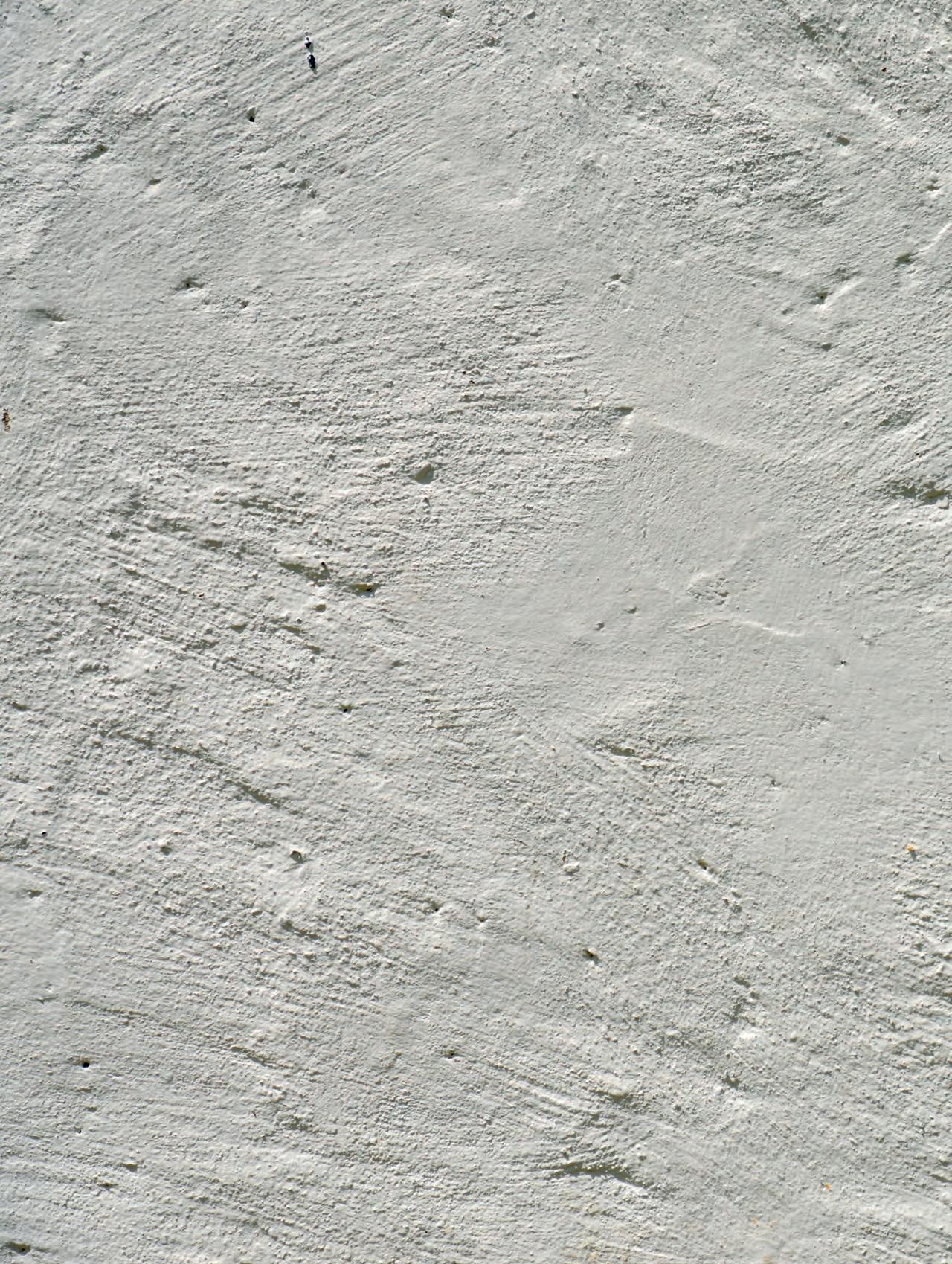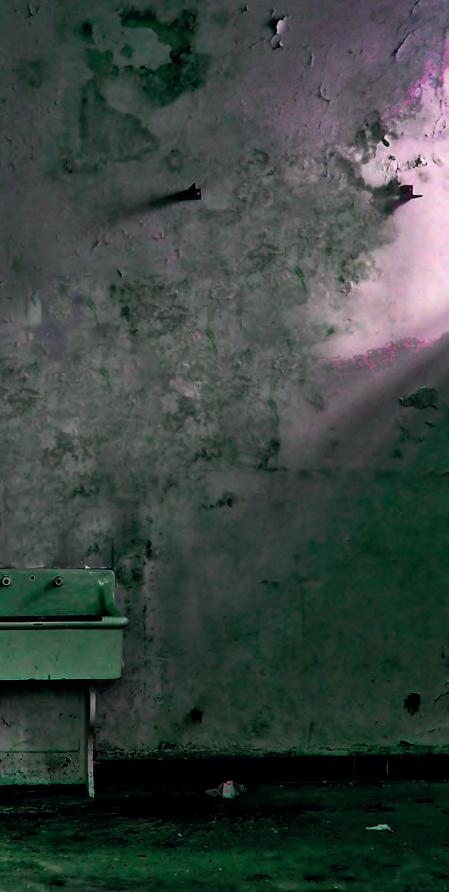
6 minute read
The plaster room. By Andy Sanson
The Plaster
Room
Advertisement
By Andy Sanson
Saving the best to last, this is Andy’s final piece of 2022.

Here we take a satirical look at ‘The Plaster Room’, many of us will have a wry smile on our faces as we recognise the images Andy conjures up in this fun, light hearted piece.

Returning to the subject of The Lab and the goings-on therein I hope you will indulge me for a few moments if I go off about the part of it that, even to this day, sits burned on my memory in vivid, living colour. The Plaster Room. What about it? It’s a room where things are done with plaster. It’s mixed up, twenty percent of it used and the rest thrown down the sink, on the floor or in the bin. There’s nothing to be said. It’s not a room, like the Cabinet War Rooms, The Oval Office or the Palace of Justice in Nuremburg, a seat of world shaping events and decisions. It’s not the 007 Stage at Pinewood or the Abbey Road Studios. It’s a room - with a sink, a worktop and a few cupboards full of bags of gypsum and other, incongruous stuff much of which has been there as long as the room itself. What could there be to say about it? How could I keep on about it for, say 1000 words?
The difficulty I have is keeping it below ten thousand.
The Plaster Room measured about twelve feet by five, most of which was taken up by the cupboards and fittings already mentioned. I have seen eight people, including ‘Fred’ who was six foot four and twenty stone, crammed in there at one time trying to conduct their duties in conditions that would have today’s Health and Safety apoplectic in a twinkling.
The room itself was like some sort of hideous anti-Tardis; smaller on the inside than it looked from without. You would be imprisoned therein for lengths of time most effectively measured on a geological scale and, when you emerged, nothing had changed. At the very least you felt you might have earned the privilege of being transported to Mechanus to witness the final battle between the Daleks and the Mechonoids but, no, there you were, still in The Lab in your shackles with the all-pervading stink of pre-HSE monomer drifting midway between floor and ceiling, its ice-cold claws of methacrylate and, probably, plutonium, slithering behind your eyes, and the Junior Partner presenting you with his order for the Chinese.
As for the ‘décor’ - it’s not beyond possibility that, had the existence of the Plaster Room Walls come to the attention of any of the world’s great pharmaceutical companies, it may have become the focus of an aggressive takeover bid from one or more of them. Strange cultures grew on those walls; green, mouldering murals of living matter, seething with the raw materials for chemical experimentation and the production of narcotics and potions both legal and otherwise.
Into this terrifying catacomb was introduced, sometime in the late fifties, the added hazard of ‘that new-fangled electric’. With twelve vulcanisers bubbling away like Merrie Melodies train whistles and the Paco belching superheated steam into the atmosphere with the verve and gusto of Old Faithful and Vesuvius on a weekend razz at Krakatoa’s gaff, the humidity in the place was a bit like that at the bottom of the Marianas Trench. Only worse. Niagaras of water cascaded down from the ceiling into every socket and plug. If any of you have seen the cover of the Captain Beefheart compilation ‘Electricity’ you will have some idea of the conditions you might expect should the desire to venture into the place ever take its icy grip. If you haven’t, type ‘beefheart electricity’ into Google, click on ‘Images’ and you’ll see what I mean.
Such was the organisational brilliance of those concerned that it usually fell where impression casting and boiling out took place at exactly the same time. The choreography was exquisite. I’m sure that the elders of The National Ballet would have been overwhelmed by the glistening expertise with which plaster, wax, soggy cotton wool, indelible pencil and scalding water danced about one another with nary a touch nor bump, the whole melding into one flowing operation whilst shaking at the seams like that contraption on the front cover of Pink Floyd’s Relics album, ever on the point of explosion yet always holding together as though in the grip of an unseen, mystical force.
Of course, there was a gas supply as well. That was something else to worry about. Much of the time the overlong tubing that connected each of the three rings to the mains was coiled into serpentine convolutions that came dangerously close to the naked flames. This was evidenced by the discolouration and scorch marks along their lengths. Our minds were generally put at ease by Management telling us to get on with our work and stop picking flies. After all, they’d been like it for years so they weren’t going to burn through now. Were they?
And the plumbing - ahh! The Plumbing. How that ever worked is anybody’s guess. The tons of half-set plaster and congealing molten wax that went down the sink somehow managed to make it into the sewers without setting like concrete in the great vascular maze under the floors.
Places like The Plaster Room could never be designed. Not even by a committee. Like a quaint Cotswold village it grew over the years, bit by bit, scar by scar, gouge by gouge until it became what it was. Tolkien must have dreamt about it once for from where else would have sprung the idea of Mordor or the Mines of Moria?
I believe the floor had once been made up of quarry tiles or some such durable material. No longer. Prior to my tenure it had degraded into a ruddy powder of a similar grade to the very plaster for whose use the room existed in the first place. It was suggested we might save money for The Lab by shovelling it into the hoppers to boost supplies but it was felt that this would be counter-productive as the colour would cause The Gentlemen to question the quality of our product. Anyway, excavating the floor of such a place might give release to all manner of evils best left alone - visions of Hieronymus Bosch and Poe haunted our waking hours.
I believe the Plaster Room has now been upgraded. I suspect that means given a coat of whitewash and the half inch coating of condensed wax scraped off the ceiling (recycled as raw material for the construction of bite blocks no doubt) and the vulcanisers piled up at the back of The Shed after failed attempts to interest various museums and collectors/retailers of antiques and curios. I have no desire to confirm the rumour by personal visit.












